Media | Articles
First Drive: 2021 Mercedes-AMG GLE 63 S and GLS 63
It was a struggle to keep my lunch down while riding shotgun in the 2020 Mercedes-AMG GLS 63. My driving partner, however, seemed totally fine. That was surprising, and not because I assumed that he, too, had recently overindulged in cinnamon-sprinkled dessert empanadas; he was thrashing this nearly three-ton behemoth like it was a low-slung sports sedan. “It’s a lot of vehicle to be throwing around,” he said, just before cranking the Alcantara-wrapped steering wheel to hustle around another tight turn in the southern California hills. A vehicle as chonky as the GLS shouldn’t be turning so flat or accelerating so effortlessly, I thought.
Lightness be damned, the added heft is worth it here. Like so many pounds of muscle on a bulked-up fullback, the AMG GLS 63 is stacked with performance enhancers, including an adaptive air suspension (with dampers the size of a human leg) and an active roll stabilization system similar to that of the Porsche Panamera. At its heart is the familiar 4.0-liter biturbo V-8, which delivers 603 hp and 627 lb-ft of torque with a delicious soundtrack.
Then there’s the other wizardry AMG applies to the suspension geometry, plus the steering rack, the transmission and just about everything else. To think that this is the very same treatment AMG lavishes on cars like the C63 on up to the AMG GT is insane. The result is a full-sized, three-row family hauler 13 inches taller than an S-Class that feels supernaturally glued to the road, no matter how curvy it gets. More than many recent BMW M vehicles, AMGs have assumed the mantle for the ultimate German-made driving machines.
20200401164709)
20200401164610)
Marketplace
Buy and sell classics with confidence
20200401164720)
Threading the GLS 63 through the California hills was fluid, almost zen-like. Dial in the suspension to your desired firmness with a small knob on the steering wheel, from Comfort to Sport to Sport +, and get to driving. The GLS 63 remains remarkably neutral when flung about. In Comfort mode, you can relish complete control even as you slosh around hairpins with pronounced body roll. Pick either Sport or Sport+ mode to curb unwanted movement, hasten throttle response, and hold gears longer. The throttle is so well connected, precise, and linear—just like the steering—that there’s very little conscious thought cluttering your mind after while. You’re just carving arcs through the pavement, one after another.
As good as the GLS feels careening through corners, the smaller GLE 63 S is even better. It’s hundreds of pounds lighter and nearly a foot shorter in length, but the midsized GLE 63 S has the same engine as the GLS 63, plus the addition of active engine mounts; it’s much more deft. On top of that, there’s the more aggressive Race mode for when you find an open road and want to feel like a Pro/Am driver in a Mercedes-AMG GT3.
The contoured steering wheel, inlaid with carbon fiber and commanded by two dials (electronic stability control adjustment on the left, driving mode selector on the right) feels like something out of a supercar. Same goes for the rowdy exhaust sound. Muted to the point of sounding like a V-6 in Comfort mode, in Race mode it roars. Dive into a turn, pressing hard on the touchy but powerful brakes, and the ensuing forceful downshifts of the nine-speed automatic transmission prompt a sweet sounding bark from the engine.
As exciting as that is, accelerating in these two AMG SUVs is even more adrenaline-inducing. Especially when your driving partner tests launch control from a stop sign at a backroads intersection. However, what’s more impressive than the brute force of these vehicles is the smooth, effortless delivery of power, no matter the situation. There are a few reasons for that. For one, the rear-biased all-wheel-drive system and electronically controlled locking rear differential put power down with astonishing effectiveness. On long, sweeping turns, you can feel in the seat of your pants as the systems work to plant the car and keep up momentum. Also aiding acceleration is an electric motor sandwiched between the engine and the transmission that neutralizes what little turbo lag the twin-turbocharged V-8 might exhibit. The so-called EQ Boost, which comes standard on these AMG models, temporarily supplements engine output with 21 hp and 184 lb-ft of torque. Mercedes estimates 0–60 mph in 4.1 seconds for the GLS 63 and 3.7 seconds for the GLE 63 S.
20200401164626)
The EQ Boost system also improves efficiency, not only by adding power but also by controlling idle speed and the start-stop function that powers off the engine at traffic lights and other temporary stops. Half of the engine’s cylinders also deactivate under certain driving conditions. Don’t expect hybrid-level fuel economy, though. Despite our best efforts to achieve 4 mpg on a two-hour romp through the hills—including idling while photo taking—we averaged in the mid- to low teens, according to the test vehicle’s trip computer.
Like all Mercedes-AMG models, these two utes excel at coddling their occupants. Their cathedral-quiet interiors, comfortable seats, and placid driving dynamics in Comfort mode make highway miles—or gridlock hours—effortless and pleasurable.
It’s not all a home run, though. Mercedes’ new MBUX system has taken infuriatingly convoluted controls to the next level with a degree of commitment only German engineers can deliver. I never thought I’d miss the large rotary dial controller on previous Mercedes models, but now that there’s a touchpad in its place, that is indeed the case. Scrolling through menus or selecting functions on the massive center screen is now nearly impossible to do while driving. You’ll swipe around cautiously, apprehensively, hoping to land on the right icon between bumps in the road. However, when the vehicle’s not in motion, the now-touch-sensitive screen makes poking around the deep menu system much easier. Swiping and pinching prompt snappy responses. The graphics on both the center screen and the instrument panel behind the steering wheel are dazzling. It almost feels appropriate to recline the seats and watch a movie or play Escape from Tarkov.
20200401164513)
20200401164529)
20200401164456)
Unfortunately, Mercedes let the panache of its visuals outshine the functionality. Moving graphics, readouts galore, navigational directions overlaid with live video images—it’s not quite as overwhelming as a jetliner’s cockpit, but it’s getting there. The voice recognition technology—activated by saying “Hey, Mercedes”—helps to quell feelings of hopelessness as you try to adjust the route guidance or radio station while in motion. The system may become more intuitive to owners as they rack up days and weeks of driving time, but from my brief experience, it’s more gimmick than helpful assistant. Then again, with six-figure price tags—$113,950 for the GLE 63 S and $132,100 for the GLS 63—futuristic-seeming technology and features are expected.
Still, there is a certain logic to buying a family vehicle with such impressive performance. If your daily driver can haul your family and all its stuff while blowing doors off fellow motorists and prompting warm, tingly feelings when you press the throttle, then forgoing the purchase of an AMG GT or an S63 doesn’t seem as much of a compromise. Pick what size you need, the large GLE 63 or the gigantic GLS 63, load up the family, and enjoy those blissful stretches of back road. Maybe just stick to the conventional swimming pool wisdom and wait 30 minutes or so after eating to let loose that AMG V-8.
20200401164536)


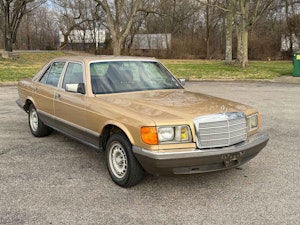
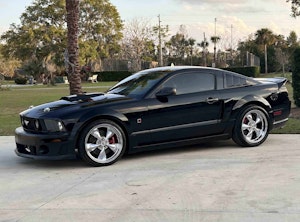

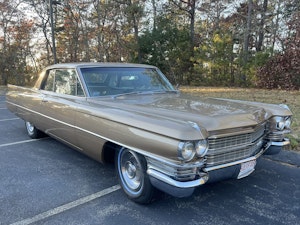
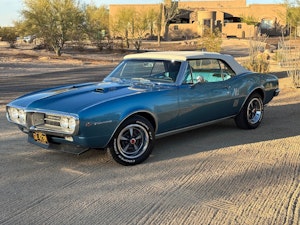
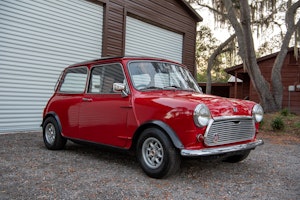
20200401164501)
20200401164507)
20200401164519)
20200401164524)
20200401164541)
20200401164546)
20200401164551)
20200401164557)
20200401164603)
20200401164615)
20200401164621)
20200401164632)
20200401164639)
20200401164645)
20200401164650)
20200401164658)
20200401164704)
20200401164715)
20200401155625)
20200401155638)
20200401155718)
20200401155724)
20200401155730)
20200401155737)

